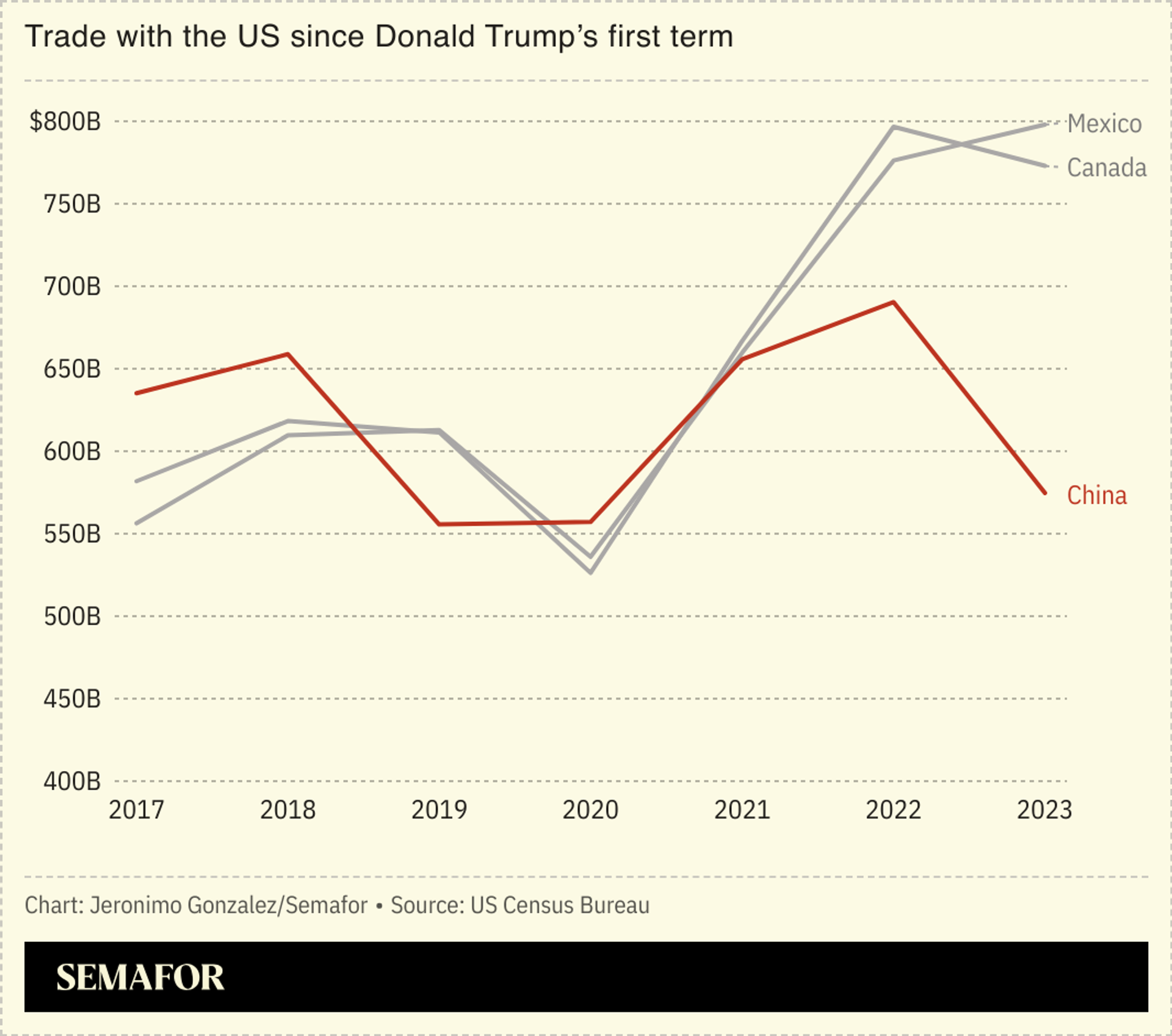The News
US President Donald Trump said he favored imposing a blanket 10% tariff on goods imported from China, indicating that early hopes of a rapprochement may be misplaced.
Beijing criticized Trump’s proposal, with a top official arguing against protectionism — which China itself practices by restricting access to Western firms such as banks and tech firms.
Still, some analysts were upbeat: Trump’s proposed tariffs were lower than those he suggested against US allies, and his rhetoric has been less harsh than it was during his first term.
“You can sense there is cautious optimism,” a Shanghai-based academic told the Financial Times, while a prominent US political scientist said “we’ll be surprised on the upside” in terms of an improvement in ties.

SIGNALS
Trump administration gathers Indo-Pacific allies…
On his first full day as secretary of state, Marco Rubio convened a meeting of the Quad, a China-focused group consisting of the US, India, Australia, and Japan. “This is a very good example that we can continue this kind of minilateral or multilateral cooperation under the second Trump administration,” a Japanese spokesperson said. One analyst told Nikkei Asia that the early meeting is a “sign that we’re going to see a continued focus on working with allies and partners to counter China.” Rubio is expected to be joined at the State Department by a number of prominent Republican China hawks, including Jacob Helberg — who played a key role in the TikTok ban — as a top economic official and Elise Stefanik — who backed legislation banning Chinese drones — as UN ambassador.
…But how hawkish will the Trump administration actually be?
Even as Trump stacks his second administration with prominent China hawks, experts are divided over his approach to Beijing. During Trump’s first term, the president undercut his administration’s China policy, repeatedly praised Xi, and seemed to view competition with China strictly through an economic lens rather than the consensus view that Beijing was a security threat, a China researcher at the International Crisis Group argued. Now, Trump’s coziness with corporate titans who do business in China, could see figures like Elon Musk “press Trump to go easy on China,” an expert said. Other leading analysts disagree, however: Eurasia Group president Ian Bremmer argued that Trump seems determined “to tighten the pressure on China and its stumbling economy.”
US could see opening to disrupt China-Russia relationship
After Trump’s inauguration, Chinese President Xi Jinping and Russia’s Vladimir Putin held a video call to discuss potential outreach to the new US administration, the Kremlin said. While both leaders congratulated Trump on his reelection, relations with the US have not improved since Trump’s first term. Some Chinese experts fear that Trump will pursue a policy referred to as a “reverse Nixon,” The Wall Street Journal reported: In this scenario, just as President Richard Nixon fostered ties with China to counter the Soviet Union during the Cold War, Trump might work to turn Moscow against Beijing. On the campaign, Trump promised to “un-unite” the two US adversaries. “They’re [natural enemies], and we’ve allowed them to get together. It’s such a dangerous thing.”

